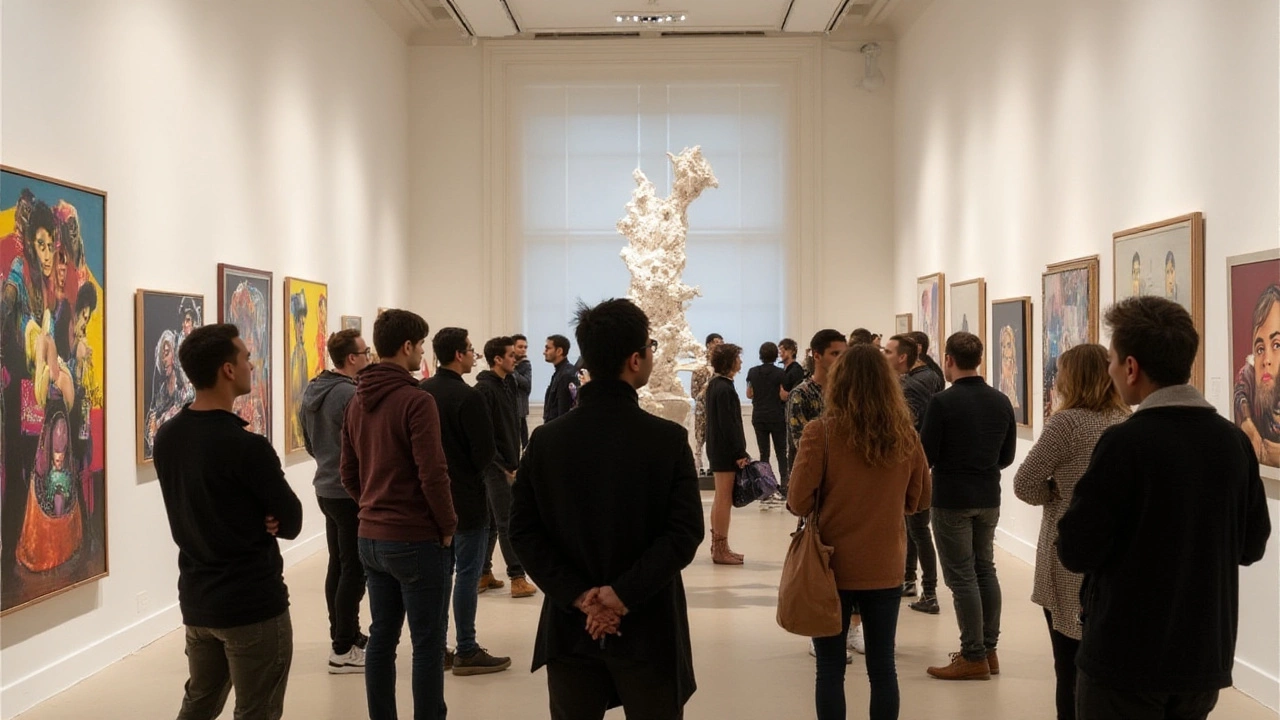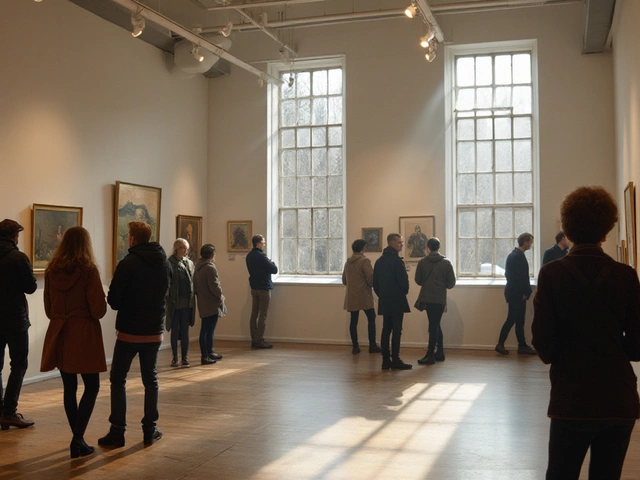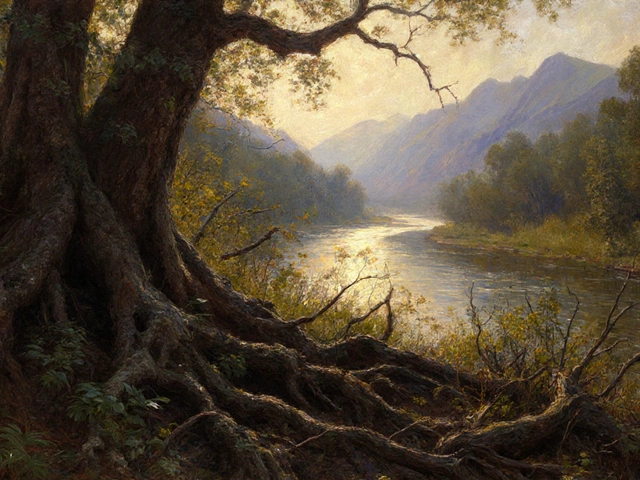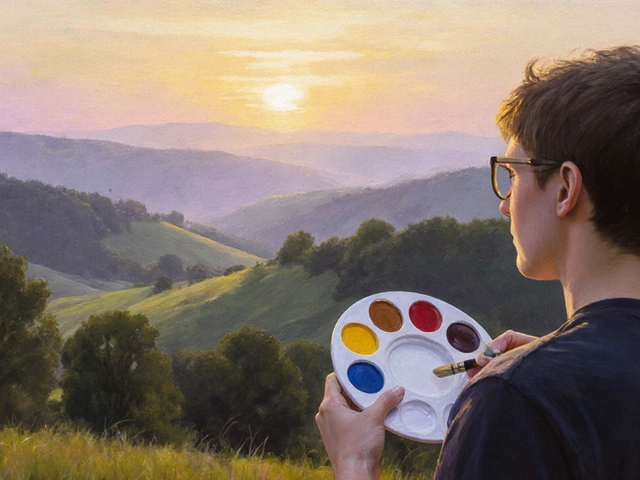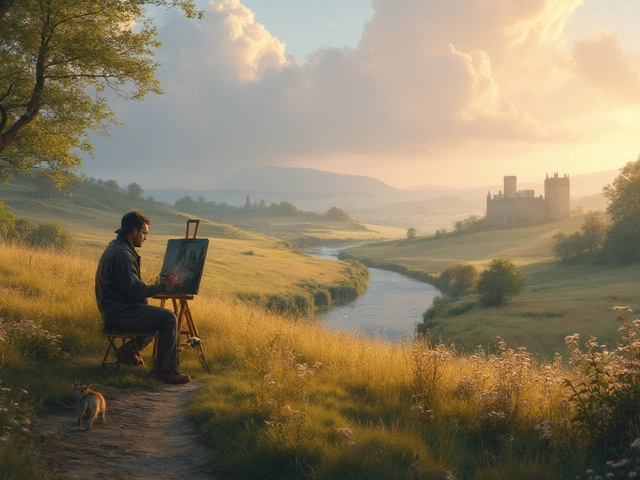Modern art often leaves people puzzled, stirring an array of questions. What is it trying to convey? Why does it look the way it does? These inquiries highlight the unique purpose that modern art serves in our lives today.
At its core, modern art is about challenging norms and forging new paths. Unlike classical art that adheres to strict techniques and themes, modern art revels in breaking the rules. This boldness leads to fresh perspectives, urging us to think beyond the ordinary.
What makes modern art truly fascinating is its ability to engage with contemporary issues. Artists use it as a platform to express their views on social justice, environmental concerns, and cultural identity. It acts as both a mirror and a hammer - reflecting society and, at times, attempting to shape it.
As we delve deeper into its purpose, we uncover the vital role modern art plays in fostering dialogue and encouraging innovation. It challenges us to see beyond the canvas and embrace the complexity of the human experience.
- Defining Modern Art
- The Role of Modern Art in Society
- Interpreting Modern Art
- The Future of Modern Art
Defining Modern Art
Modern art is a complex and multifaceted term that has been evolving since the late 19th century. It represents a departure from traditional forms of art, ushering in a period characterized by experimentation and innovation. At its essence, modern art challenges the viewer to consider the world through a new and often radical lens. The movement emerged in response to the profound changes brought about by industrialization, technological advances, and rapid urbanization. Artists began to see the world differently, wanting to express their interpretations and impressions in unique forms. By defying conventional standards of beauty, modern art created a space for new ideas and perspectives to flourish.
This sweeping movement encompasses a variety of styles and disciplines, from abstract expressionism to surrealism, each contributing to the narrative of modern art. Movements like Cubism, pioneered by artists such as Pablo Picasso, fractured the visual perspective to create an image that felt more inclusive of the time's multifaceted reality. Painting was no longer just about accurately representing a subject; it now involved conveying emotions and thoughts in bold, sometimes jarring ways. This shift allowed artists to break away from the dictates of realism, embracing instead subjects and styles that were symbolic, expressive, and often personal.
The advent of modernism saw artists employ new techniques and explore uncommon materials. They pushed the boundaries of what was considered art, paving the way for future innovators. Modern artists like Wassily Kandinsky, regarded as a pioneer of abstract art, used color and form as a language to communicate deeper meanings beyond the visual. Artists like Jackson Pollock introduced techniques like drip painting, transforming how we perceive paint on canvas. To Kandinsky, art was a doorway to emotional and spiritual realms that words alone could not express.
To fully appreciate modern art, it’s essential to consider not only its visual aspects but its cultural implications. This movement didn't exist in isolation; it was heavily influenced by—and, in turn, influenced—contemporary social, political, and cultural phenomena. For instance, the horrors of the two World Wars left an indelible mark on artists' psyche, pushing them to explore themes of existentialism, alienation, and rebellion within their work. Modern art sought to make sense of a rapidly changing world, opening dialogues that questioned everything from the nature of beauty to the essence of humanity itself.
“Art is not a mirror held up to reality but a hammer with which to shape it,” proclaimed the dramatist Bertolt Brecht.
This quote captures the transformative aspiration of modern art, suggesting that art is an active force, not just a passive reflection.It stirs our emotions, prods us to reflect on our place in the world, and challenges us to envision different truths. Brecht's metaphor implies the efficacy of art to forge new pathways and participate meaningfully in societal discourse.
As modern art continues to evolve into newer forms like digital art and installations, it remains rooted in the spirit of innovation and interrogation. This ever-changing tapestry reminds us that at its core, modern art is fluid, adaptable, and eternally receptive to change. It's a vibrant conversation that propels both artists and audiences to constantly redefine what art can be and what it can mean.
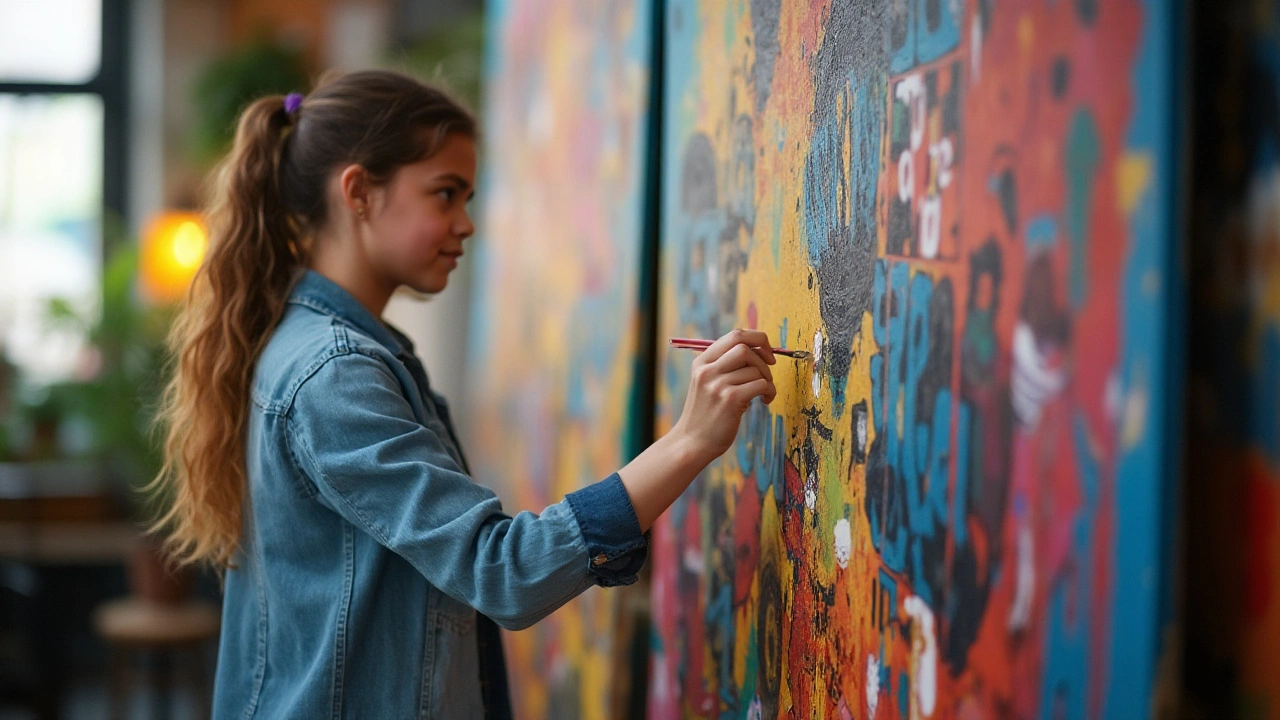
The Role of Modern Art in Society
Modern art has carved a quintessential niche in today's society, acting as a dynamic force that shapes and reflects the world we live in. Unlike traditional art forms that often adhere to specific norms, modern art dares to tackle themes head-on, no matter how controversial or unconventional. A marvelous example of this bold approach is Picasso’s Guernica, a work that starkly critiques the devastation of war. By weaving complex emotions with symbolism, such works invite society to ponder matters often skirted in daily conversations. For many, a visit to a modern art gallery stirs a mix of intrigue and introspection, as each piece serves as a conversation starter around societal issues, both evident and obscure.
The power of modern art extends beyond aesthetic pleasure; it is an unyielding catalyst for societal change. On numerous occasions, artists have employed their craft to highlight pressing issues such as climate change, racial inequality, and human rights. Take, for instance, Banksy—a modern-day figure known for street art that challenges social injustice and political ideologies. Each graphic piece, steeped in irony and wit, serves not only as art but as activism, urging viewers to reconsider their perspectives. In today's fast-paced world, these artists capture moments of pause, compelling society to take a momentary step back. According to art critic Jerry Saltz, "Art is not a thing—but a way."
"Art is the highest form of hope," remarked Gerhard Richter, underscoring art's transformative power.
Embracing various mediums, from digital to installation art, the scope of modern art's impact is extensive. Museums and galleries report increased visitations as exhibitions continue to draw diverse audiences, eager to engage with art that speaks. This engagement often leads to heated debates and discussions, both online and offline—a testament to art's ability to connect individuals across different walks of life. As modern art harnesses technology, artists are exploring virtual reality experiences that allow for even deeper immersion. With artists continually pushing boundaries, society finds itself in an ever-evolving dialogue, informed by art's myriad expressions. Young minds, much like my son Bryce, are being introduced to this world of endless possibilities where art is not confined to a canvas but expands into experiences that shape thought and perception.
The educational value holds significance, as modern art is integrated into curriculums to inspire creativity and critical thinking among students. Schools and educational institutions utilize art to teach not just history but current affairs and empathy. Students engage in projects that require them to analyze, create, and discuss the art, helping them develop skills beyond textbook learning. Seeing art from a younger age instills a sense of responsibility and awareness towards global issues, making future generations more conscientious. A report by the National Endowment for the Arts highlights how students involved in arts are inherently better at problem-solving, and have heightened cultural awareness. This transformation through art education shows a ripple effect, benefiting society at large in cultivating more informed and open-minded citizens.
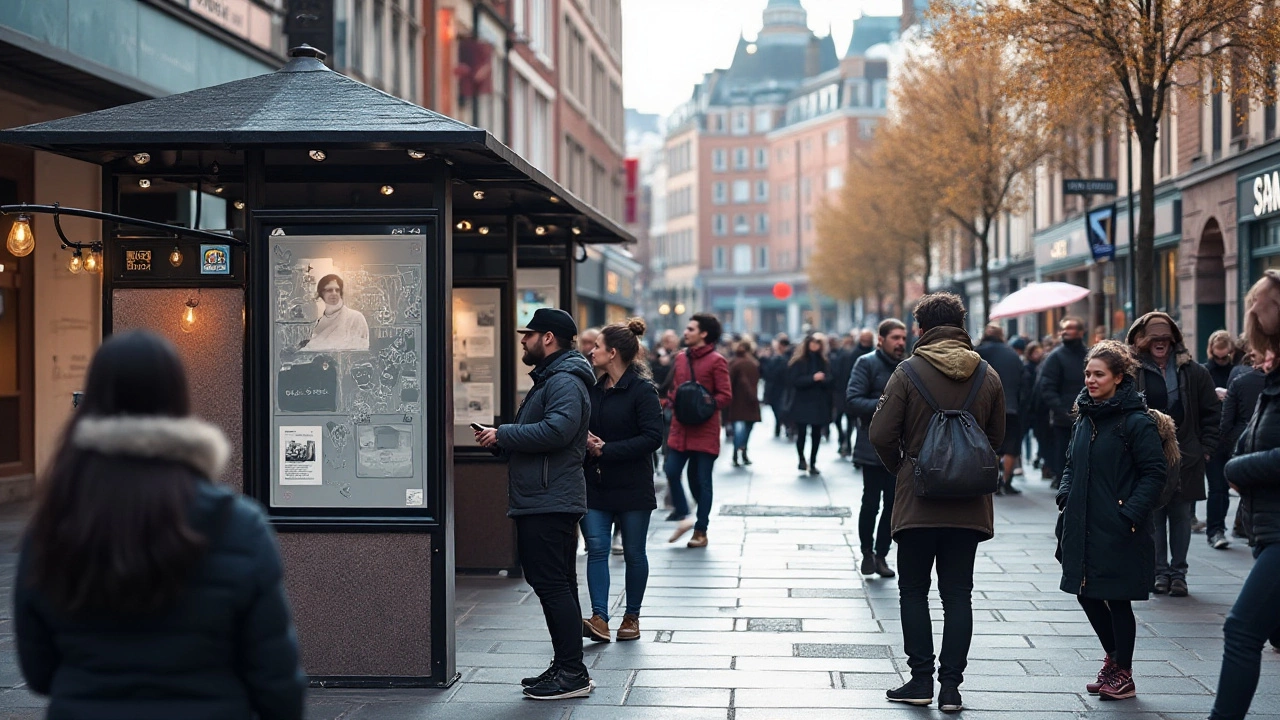
Interpreting Modern Art
Interpreting modern art often feels like attempting to decode an intricate and lively language. Unlike other forms of art that can be straightforward, modern art thrives in ambiguity and demands an open-minded approach. Dr. Sarah Richardson, an esteemed art historian, once remarked,
"Modern art isn't just seen with the eyes; it's felt with the soul. It's about assessing not just the obvious, but the hidden intricacies."This captures the essence of how one might approach analyzing pieces that may at first seem puzzling or even chaotic.
Many art lovers may stand in front of a modern art piece and catch themselves pondering its purpose. The canvas might seem like a haphazard splash of colors or perhaps a peculiar assortment of shapes. The common encourager here is the idea that not all art is made to delight the senses. Sometimes, it is meant to provoke, challenge, or even unsettle. Modern artists push boundaries by infusing personal narratives, sociopolitical statements, and abstract concepts into their work.
For the curious mind, decoding modern art involves considering the context in which it was created. The early 20th century, a time marked by unprecedented change, gave rise to many of today's most celebrated modern movements. Artists like Pablo Picasso and his invention of Cubism challenged perspectives by representing subjects from multiple angles. Similarly, Surrealism, popularized by Salvador Dalí, sought to tap into the unconscious mind, creating dreamlike and often bizarre compositions.
Taking a closer look, color theory plays a pivotal role in this realm of art. Colors in modern art don't just depict reality but are utilized to convey emotion and provoke reaction. For instance, while blue may often communicate tranquility, in some contexts it can evoke melancholy or introspection. The depth of interpreting colors is a playing field for psychologists too, making art a fertile ground for interdisciplinary exploration.
Modern art also interacts deeply with the present moment, serving as a direct dialogue with the viewer. This dialogue isn't just between the artist and the observer but also takes into account the environment in which it is displayed. Galleries and museums often curate exhibits that influence how an audience perceives certain works. A piece shown in a bustling city gallery might elicit different feelings compared to one viewed in a serene, rural setting. The dynamic interaction between art and its surrounding space can significantly dictate interpretation.
Finally, technology now plays a part in modern art's burgeoning influence. Digital works, installations, and even virtual reality are generating new methods for audiences to engage with art. Pieces that were once confined to physical display spots can now be accessed globally with a click. Online platforms enable artists to turn traditional interpretations on their head by embracing innovative and interactive mediums. The digital age is thus expanding the horizons of interpretation, allowing art to reach audiences it's never imagined possible.
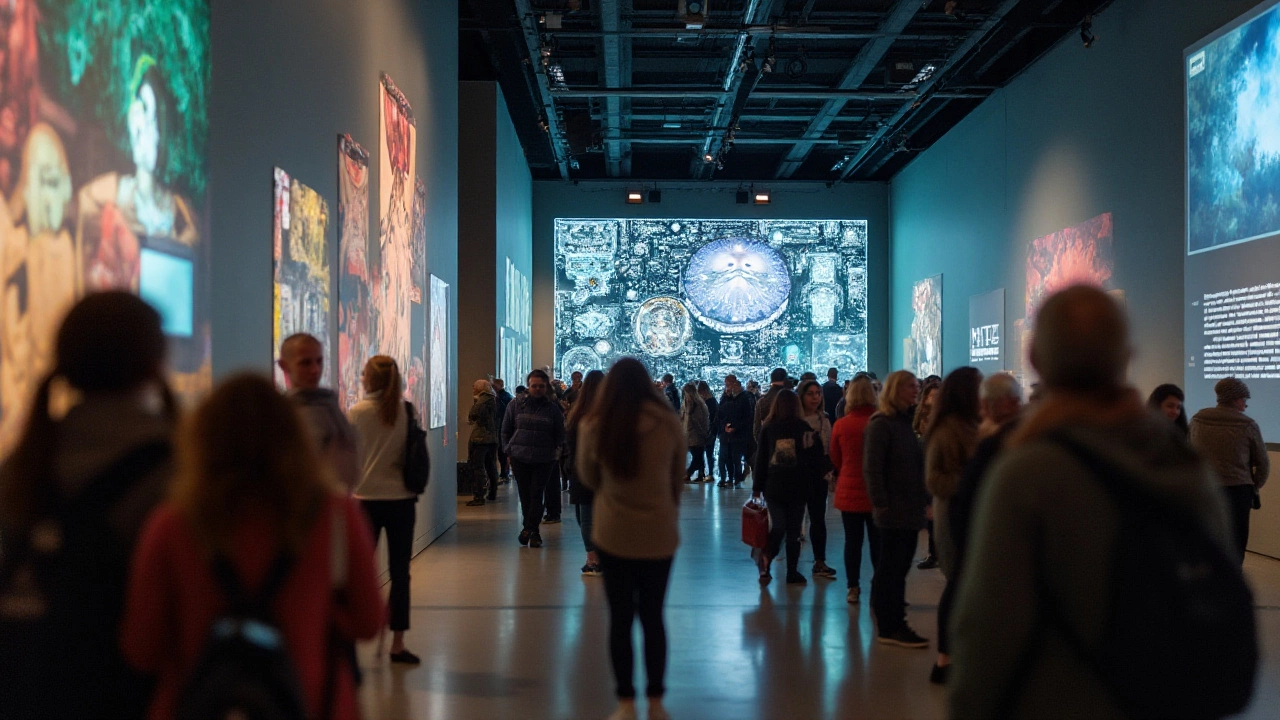
The Future of Modern Art
As we peer into the horizon of modern art, we embark on an exciting journey brimming with endless possibilities. The future landscape of modern art is not easily forecasted, yet the trends we witness today offer hints towards the potential evolution of this vibrant field. Technological advancements are pivotal players in this unfolding narrative, inspiring artists to explore territories previously deemed unreachable. The fusion of modern art with digital mediums, such as virtual reality and augmented reality, heralds a new era where audiences engage with art in ways that are interactive, immersive, and deeply personal.
Imagine stepping into a world constructed entirely by an artist's vision, where brush strokes transform into three-dimensional spaces. This integration of technology is not just a fanciful pursuit; it has already begun. Major institutions and galleries have embraced the virtual art exhibit, offering viewers worldwide access to art collections online, transcending physical boundaries. The democratization of art accessibility is arguably one of the most crucial shifts we are witnessing today. Lowering the barriers to experiencing art means a wider and more diverse audience, further fueling the creative exchange.
In cities around the globe, we find urban spaces being reimagined as canvases, with public art installations popping up in unexpected places. This trend towards street art and ephemeral art forms showcases the adaptability of modern art and its relevance in contemporary urban culture. Engaging with such art often means engaging with pressing current issues, a testament to the power of art as a catalyst for conversation. The cross-pollination of art with other disciplines, such as science and environmental studies, paves the way for impactful collaborations.
Supportive voices in the art world echo these sentiments, too.
"The future of art is fluid and interconnected; it extends beyond traditional mediums, calling for creators and curators to be both thoughtful and audacious," says contemporary art curator Mia Klein.Her words highlight the necessity for evolving roles within the art world itself. As the distinction between the artist and the technologist blurs, new opportunities arise for collaborative projects that redefine what art can be and do.
Despite the technological and cultural shifts, the core purpose of modern art will likely endure. As a domain that continuously challenges our perceptions and provokes meaningful reflection, its role as a mirror to society is irreplaceable. The future invites us, both as creators and spectators, to reexamine our relationship with art, prompting questions about authenticity, originality, and the value we place on human creativity in an increasingly digital age.
Economic Implications and Sustainability
The evolution of modern art also brings forward economic considerations. The art market has always been a complex ecosystem influenced by cultural trends, economic climates, and technological disruptions. With the advent of digital art marketplaces and NFT (non-fungible token) art, the definition of ownership and value is transforming. These technologies allow artists to reach collectors directly, bypassing traditional intermediaries and broadening their market reach. However, sustainability and environmental concerns are increasingly important as we pursue these new art forms. Artists and industry leaders alike are beginning to address these issues, seeking greener solutions for production and dissemination of modern art.
The road ahead for modern art is fraught with challenges, yet filled with unprecedented opportunities for creativity and societal impact. How these potential futures unfold will depend not only on the artists who shape them but also on the support they receive from audiences, communities, and institutions dedicated to preserving the enduring spirit of art as a transformative force.
